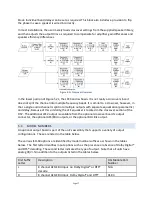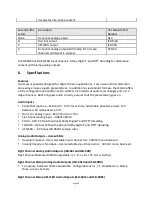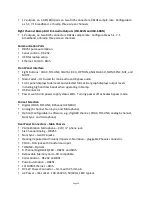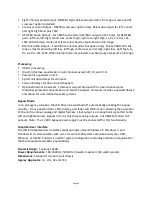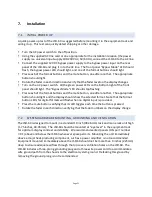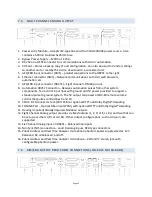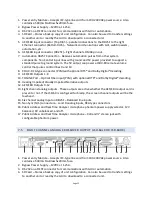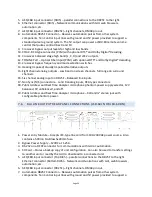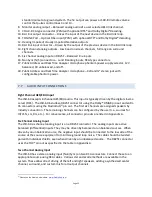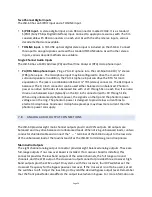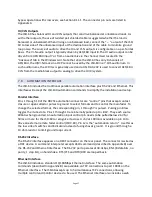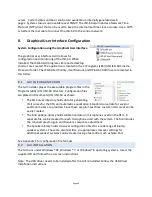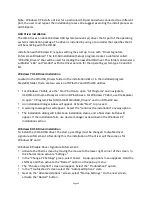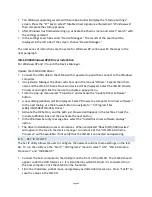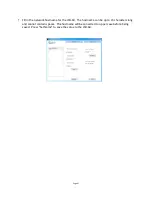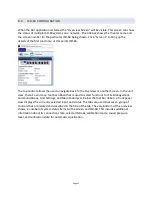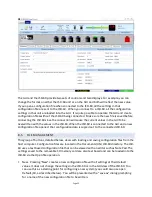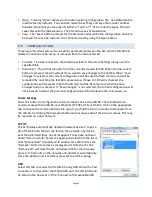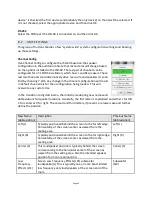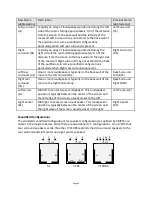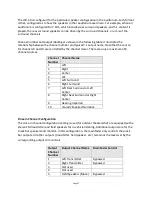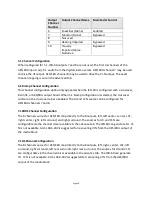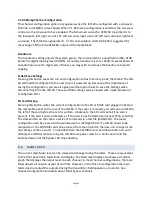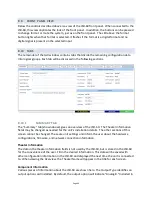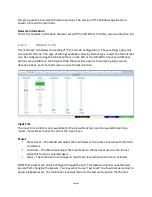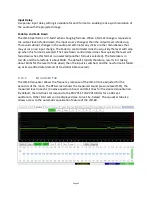
Page 27
bypass operation with crossovers, see Section 8.11.1. The connector pin outs are listed in
Appendix A
HI/VI-‐N Outputs
The JSD-‐60 has balanced HI and VI-‐N outputs that can drive balanced or unbalanced loads. As
with other outputs, the use of twisted pair shielded cable is suggested whether the load is
balanced or unbalanced. When driving an unbalanced load, connect the “ – ” output of the JSD-‐
60 to low side of the unbalanced input at the destination end of the cable to minimize ground
loop noise. The source of audio to drive the HI and VI-‐N outputs is configurable on a per-‐format
basis. The VI-‐N audio output is typically driven by AES/EBU input 8. The HI audio output can be
driven from AES/EBU input 7 or from an audio mix via the channel mixer located in the
“Advanced” tab in the Windows GUI. Note that since the JSD-‐60 has only 8 channels of
AES/EBU, the HI/VI-‐N tracks in a DCP cannot be used by the JSD-‐60 in a 7.1DS auditorium. In
such auditoriums, the LCR mix is generally used and a USL DAX-‐202 is used to convert AES/EBU
VI-‐N from the media block output to analog to drive the HI/VI system.
7.9
AUTOMATION INTERFACE
The JSD-‐60 includes the traditional parallel automation interface plus RS-‐232 and Ethernet. This
interface will accept the JSD-‐100 automation commands to simplify the installation and setup.
Parallel Interface
Pins 1 through 10 of the DB25F automation connector are “control” pins that accept contact
closure or open collector pulses to ground to select formats and to control the main fader. To
change the selected format, the corresponding pin, 1 through 7 is pulsed. Pulsing pin 8 low
toggles the mute state. Pins 1 through 10 are internally pulled up to +8.4V. They each source
400uA when grounded. An automation input control pin needs to be pulled below 2.6V for
50ms or more for the JSD-‐60 to recognize it as low. A +5V at 100mA is available on pin 13 to
drive an external remote fader control (JSDV-‐80). Pin 12 is the “automation return.” Use this as
the low side of switches and indicators instead of using chassis ground. It is ground through a
10 ohm resistor to limit ground loop current.
RS-‐232 Interface
The RS-‐232 interface appears on a DE9F connector on the rear panel. The connector is wired as
a DCE device. A command interpreter accepts ASCII commands (described in Appendix B) over
the RS-‐232 and Ethernet interfaces. The RS-‐232 port operates at 38.4kbps, 8N1 (8 data bits, no
parity, 1 stop bit), no handshake. RTS/CTS and DTR/DSR are looped back.
Ethernet Interface
The JSD-‐60 includes a standard 10/100Mbps Ethernet interface. The same automation
commands (described in Appendix B) are available on TCP connections to port 10001 on the
Ethernet interface. The JSD-‐60 accepts up to 5 simultaneous TCP connections, allowing
multiple control and monitor devices to be used. The Ethernet interface also includes a web
Содержание JSD-60
Страница 2: ... Page 2 ...
Страница 10: ... Page 10 3 1 DECLARATION OF CONFORMITY ...
Страница 96: ... Page 96 JSD 60L and JSD 60D rear view JSD 60LX and JSD 60DX rear view V150219 ...





